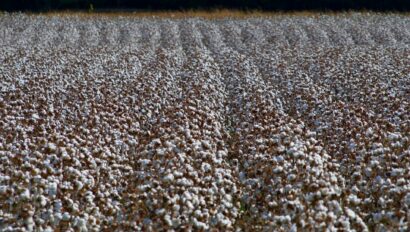Textile Exchange Launches 2020 Material Change Insights Report
New Material Change Insights Report summarizes the state of fiber and materials sourcing in the textile industry.
To bring the motto of Insights-Action-Impact to life and move from strategy to action, Textile Exchange is launching the Report, Leaderboard, and Dashboard together as a set. This provides a comprehensive, multi-pronged analysis of the state of the industry and allows users to explore and engage with the data in multiple ways.
The 2020 launch includes a new and highly interactive MCI Leaderboard. It shows how companies performed and where they are focusing their efforts. The Dashboard models outcomes and impacts associated with preferred materials sourcing and is a key tool to track industry progress towards Textile Exchange’s climate goal of a 45% reduction in greenhouse gas emissions over the next decade.
Claire Bergkamp, the Chief Operating Officer at Textile Exchange said, “The Material Change Index is the largest peer-to-peer comparison initiative in the textile industry. We see the MCI as an essential enabler for furthering industry accountability. Through benchmarking we want to help companies and suppliers focus their efforts and drive towards substantial change. There is no time to waste, we must move now in order to achieve the comprehensive systems change that will be required to keep us within the 1.5 °C pathway.”
Five Index Trends
#1. Participation up 10%
191 participants compared to 173 the previous year, greatest participation growth was within the Apparel/ Footwear sub-sector.
#2. Index average score up 17%
The average MCI score was up 9.8 points this year (increasing by 17% from 63.24 last year to 72.53, while remaining at the Level 3 “Maturing” performance band. Companies in the MCI Level 4 Leading band increased 125% from 16 in 2019 to 36 in 2020.
#3. Circularity drives the increase
The Circularity average score moved the Circularity Index average up from a Level 2 to a Level 3 (up 16.01 points from 34.82 to 50.83). Circularity scores increased on average by 37% with the biggest growth among outdoor/sports brands. Nine companies achieved the Leading Level 4 ranking in Circularity: C&A, H&M Group, Knickey, MUD Jeans, Nudie Jeans, Outerknown, Patagonia, prAna, and The North Face.
#4. Preferred materials now 44% of Index portfolio
Uptake of preferred materials was up 24%, (from 1.7 million tonnes reported in 2019 to 2 million tonnes reported in 2020) and preferred materials now account for 44% of the Index portfolio (previously, 39%). Preferred renewable cotton and recycled polyester accounted for most of this growth. Preferred cotton increased by 26% (1.3 million to 1.6 million tonnes/63% of cotton uptake) and recycled polyester by 30% (from 0.2 million tonnes/17% of polyester uptake to 0.3 million tonnes/18%).
#5. Greenhouse gas savings show some improvement
The most evidence of greenhouse gas emission reduction is linked to the use of recycled polyester. Savings there were 0.7 million tons CO2eq, a 16% saving over a fully conventional polyester equivalence.
We are tracking industry progress over the next decade and Textile Exchange applauds all 191 companies represented in the MCI this year, for their commitment, transparency, and progress.
The Insights Report is available for download now (https://mci.textileexchange.org/insights)
along with the interactive Leaderboard (https://mci.textileexchange.org/change-index/) and Impact Dashboard (https://mci.textileexchange.org/dashboard/)
2021 Survey launches in June
The 2021 submission window opens in June to brands, retailers, and now manufacturers and suppliers too. To participate, contact CFMB@TextileExchange.org and become a Company Creating Material Change in 2021.
About Textile Exchange
Textile Exchange is a global nonprofit that creates leaders in the sustainable fiber and materials industry. The organization develops, manages, and promotes a suite of leading industry standards as well as collects and publishes vital industry data and insights that enable brands and retailers to measure, manage, and track their use of preferred fiber and materials.
With a membership that represents leading brands, retailers, and suppliers, Textile Exchange has, for years, been positively impacting climate through accelerating the use of preferred fibers across the global textile industry and is now making it an imperative goal through its 2030 Strategy: Climate+. Under the Climate+ strategic direction, Textile Exchange will be the driving force for urgent climate action with a goal of 45% reduced CO2 emissions from textile fiber and material production by 2030.
To learn more about Textile Exchange, visit TextileExchange.org. Follow us on Twitter at @TextileExchange.
